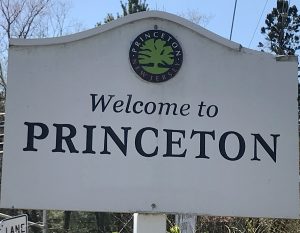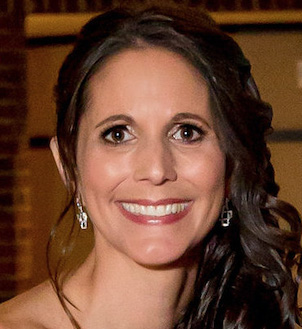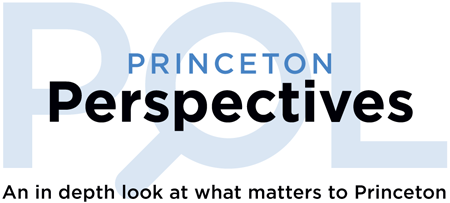 You have likely heard the words “Fourth Round Affordable Housing” around Princeton. It comes with a lot of legalese and requires a certain amount of will to pay attention and understand. Simply put, it is Princeton’s legal requirement in a fourth agreement with the state of New Jersey to build more affordable housing. Why Princeton must build it and where and how it chooses to do so, is in the details. To clarify, read on, as we try to explain where things have landed.
You have likely heard the words “Fourth Round Affordable Housing” around Princeton. It comes with a lot of legalese and requires a certain amount of will to pay attention and understand. Simply put, it is Princeton’s legal requirement in a fourth agreement with the state of New Jersey to build more affordable housing. Why Princeton must build it and where and how it chooses to do so, is in the details. To clarify, read on, as we try to explain where things have landed.
The majority of Princetonians want to live in a diverse town, whether that means by race, nationality, religion, or socioeconomics. Sometimes, balancing the latter can get complicated, as towns and residents do not always agree on how to meet that need. To help, the Garden State realized many years ago that legal requirements ensure the creation of living opportunities for residents of lower financial means. Timelines and formulas for the exact amount to be constructed have since become law.
 In April, Princeton Perspectives explained how these affordable housing mandates came about in New Jersey. It was a landmark 1975 ruling by the New Jersey Supreme Court (often referred to as The Mount Laurel Decision) that provided municipalities cannot have zoning that excludes lower income residents and mandated that every town in the state has an obligation to provide its fair share of affordable housing (you can read more history in the article Does Increased Affordable Housing Mean that Housing is Affordable for All?). After years of towns and cities not fulfilling their obligations, a newer ruling in 2015 gave lower courts more power to ensure municipalities do their part. It wasn’t until 2020 that Princeton worked out a settlement on how much housing would be required, and it has since had to play catch up, with much development going up in recent years to meet its Third Round 2015-2025 mandate. We are now halfway into 2025, and that means it is time for the Fourth Round Mandate (2025-2035), which Princeton approved just weeks ago.
In April, Princeton Perspectives explained how these affordable housing mandates came about in New Jersey. It was a landmark 1975 ruling by the New Jersey Supreme Court (often referred to as The Mount Laurel Decision) that provided municipalities cannot have zoning that excludes lower income residents and mandated that every town in the state has an obligation to provide its fair share of affordable housing (you can read more history in the article Does Increased Affordable Housing Mean that Housing is Affordable for All?). After years of towns and cities not fulfilling their obligations, a newer ruling in 2015 gave lower courts more power to ensure municipalities do their part. It wasn’t until 2020 that Princeton worked out a settlement on how much housing would be required, and it has since had to play catch up, with much development going up in recent years to meet its Third Round 2015-2025 mandate. We are now halfway into 2025, and that means it is time for the Fourth Round Mandate (2025-2035), which Princeton approved just weeks ago.
The process has been going on for months, however. The Fourth Round was determined using a new framework that was signed into law by Governor Murphy in 2024. Per this new law, New Jersey Department of Community Affairs (DCA) provided an advisory number to Princeton. The municipality accepted their determination for present and prospective need fair share obligations in January 2025, and the obligation was fixed by a judge in March. On June 25th, Princeton Planning Board held a public hearing, which included the locations and spending plan, and adopted this Fourth Round Housing Plan Element and Fair Share Plan. On June 26th it was endorsed by Municipal Council.
EXPLAINING THE FOURTH ROUND
 As a unique municipality that consolidated from the separate entities of Princeton Borough and Princeton Township, there are some previous factors that went into consideration as Princeton’s Fourth Round was finalized. DCA allotted a prospective need for Princeton’s Fourth Round to be 276. As the previous factors were weighed in, that number was balanced with credits the municipality had accrued, and it was ultimately adjusted so that Princeton will create 229 new affordable units. It has also agreed to fulfil its present need by rehabbing at least 60 Princeton Housing Authority existing units. (You can read an explanation of the totals in the fully adopted plan here).
As a unique municipality that consolidated from the separate entities of Princeton Borough and Princeton Township, there are some previous factors that went into consideration as Princeton’s Fourth Round was finalized. DCA allotted a prospective need for Princeton’s Fourth Round to be 276. As the previous factors were weighed in, that number was balanced with credits the municipality had accrued, and it was ultimately adjusted so that Princeton will create 229 new affordable units. It has also agreed to fulfil its present need by rehabbing at least 60 Princeton Housing Authority existing units. (You can read an explanation of the totals in the fully adopted plan here).
“DCA’s advisory numbers provided to municipalities for the Fourth Round were transparent and included all the information, data sets, analyses, etc., that formed the basis for these numbers. Princeton reviewed DCA’s data sets and calculations and also arranged for its number to be independently analyzed. Ultimately, we felt confident in adopting the 276 prospective need and 60-unit rehab obligation that DCA calculated for Princeton,” shares Princeton Council President Mia Sacks, who also chairs the Affordable Housing, Planning, & Redevelopment Committee.
While the amount of affordable housing to be provided is done in agreement with the state, the municipality has some leeway in where and how it meets the obligation. At times, previous round plans have been met with concern from members of the community. As it presented its Fourth Round, there has been little protest as Princeton has decided to meet its need through both inclusionary redevelopment (a mix of market rate and affordable units within the same building) and 100% affordable housing projects. This obligation includes the following proposed inclusionary sites:
- Hillier Properties sites along on 114-120, 136-150, 184-188 and 204-206 Witherspoon Street (Total 69 units, 14 to be affordable)
- 360, 364 and 366 Nassau Street, which is currently Whole Earth Center, a restaurant site and parking lots; owners under contract to include site of Princeton Foot and Ankle at 11 N. Harrison Street, retaining ground-floor commercial uses (Total 130 units, 26 to be affordable)
- The Jewish Center southwest corner lot, 457 Nassau Street (19 units, four to be affordable)
- 245-247 Nassau St (commercial space and 90 units planned, 18 to be affordable)
- 40-42 N. Tulane Street/32 Spring Street, former Kopps cycles and neighboring lots (40 units, eight to be affordable)
- 86-88, 92-94-96 Spruce Street, next to Barbara Boggs Sigmund Park (Existing structures will remain, adding 30 new units, eight to be affordable)
- 11, 33 State Rd/60 MT Lucas Rd, 29 Thanet, currently office and bank buildings and a parking lot (80 units, 16 to be affordable)
- 29 Thanet Circle (85 units, 17 to be affordable)
- Princeton Executive Center/Niksun, 457 N. Harrison Street (191 units, 40 to be affordable)
Additionally, three 100% affordable family rental projects will be built at the municipally owned sites of:
- Chestnut Street Firehouse (16 affordable units)
- Harrison Street Firehouse & Garage (34 affordable units)
- John Street temporary public works facility (35 affordable units)
 How is it decided what will be inclusionary versus what will be municipally-owned affordable housing? For starters, it would take a considerable amount of municipal taxes for Princeton to own and operate all its affordable housing. So, it shifts some of the burden to local developers. Larger Third Round developments, such as The Alice and Avalon Princeton on Harrison, were created at the expense of WinnCompanies and Avalon Communities. In doing so, they agreed to certain terms with the municipality in exchange for including affordable units. For the Fourth Round, those developing their properties such as Herring Properties and The Jewish Center, will similarly agree to take on the financial burden of land, construction and ownership under agreed-upon terms that will also include affordable units.
How is it decided what will be inclusionary versus what will be municipally-owned affordable housing? For starters, it would take a considerable amount of municipal taxes for Princeton to own and operate all its affordable housing. So, it shifts some of the burden to local developers. Larger Third Round developments, such as The Alice and Avalon Princeton on Harrison, were created at the expense of WinnCompanies and Avalon Communities. In doing so, they agreed to certain terms with the municipality in exchange for including affordable units. For the Fourth Round, those developing their properties such as Herring Properties and The Jewish Center, will similarly agree to take on the financial burden of land, construction and ownership under agreed-upon terms that will also include affordable units.
Municipally-sponsored projects tend to be smaller and may not be financially desirable to developers. They are being built on land currently owned by the municipality, and while there is a non-profit developer, the municipality is the underwriter. For both inclusionary and municipally-owned sites, factors such as environmental impact, balancing density and ease of transportation are also considered.
“The last few years of concentrated growth represented the fulfillment of a housing obligation which stretched back several decades. It is my hope that, with the passage of A4/S50, which now regulates the Mount Laurel process, we will see more predictable, evenly-paced fulfillment of municipal obligations across the state. The new law requires that towns plan for the entire ten years at the beginning of the round, which is essential for coordinated planning with schools and for infrastructure,” Sacks details.
CONSTRUCTION OF FOURTH ROUND
 As described above, the 10-year plan for Fourth Round must be agreed to at the start of the round, but Princeton need not have it all fully constructed by 2035. It has to prove certain levels of documentation for inclusionary sites, such as demonstrating an ability to have them built. For the municipally-owned sites, construction is required to begin within two years (though sometimes there are exceptions).
As described above, the 10-year plan for Fourth Round must be agreed to at the start of the round, but Princeton need not have it all fully constructed by 2035. It has to prove certain levels of documentation for inclusionary sites, such as demonstrating an ability to have them built. For the municipally-owned sites, construction is required to begin within two years (though sometimes there are exceptions).
When ironing out their agreements for inclusionary sites, the land and building are to be owned and maintained by a private developer. In exchange for that right the developer agrees to give up 20% of the space they own (to create affordable units). Legally, the government cannot mandate a private owner have affordable housing units in its building, so instead it comes to an agreement to do so. In the current cases, it provides the units will remain affordable for 40 years. While an owner could choose to revert them to market-rate for more revenue when the 40 years is up, that tends not to be the case. It is expected that in 40 years, Princeton Council will then approve a new resolution agreeing to terms with the owner for continued affordable units. This is a legal restriction, otherwise it would be considered that the municipality was engaging in taking (i.e., the government takes private property without a legal process or compensation).
MOVING FORWARD
 Though some residents have been objecting to certain decisions, the majority of Princeton’s Third Round obligations are either now completed or underway. No one spoke publicly against the Fourth Round Plan at recent hearings.
Though some residents have been objecting to certain decisions, the majority of Princeton’s Third Round obligations are either now completed or underway. No one spoke publicly against the Fourth Round Plan at recent hearings.
“Even though Princeton now has a plan in place to meet our statutory affordable housing mandate 2025 – 2035, the need continues. Waiting lists for these units number in the tens of thousands,” Sacks explain. “Hopefully the coordinated state-wide effort in the Fourth Round will provide some relief. In Princeton, we will continue to work with our community partners to facilitate more housing opportunities in what is often referred to as the ‘missing middle’ range of price points and sizes. We anticipate that long overdue zoning reforms will play a key role in these efforts over the next ten years.”
158 New Jersey municipalities did not agree with the calculations received from DCA. For most, they presented their own numbers to be analyzed and certified and/or utilized mediation and provided evidence to why different allotments seemed appropriate. Most have come to an agreement both can live with. Still about 29 municipalities are challenging their requirements in court. Princeton has been through the legal cycle in the past, and for this Fourth Round, has finalized its plan to move forward.

Lisa Jacknow spent years working in national and local news in and around New York City before moving to Princeton. Working as both a TV producer and news reporter, Lisa came to this area to focus on the local news of Mercer County at WZBN-TV. In recent years, she got immersed in the Princeton community by serving leadership roles at local schools in addition to volunteering for other local non-profits. In her free time, Lisa loves to spend time with her family, play tennis, sing and play the piano. A graduate of the S. I. Newhouse School of Public Communications at Syracuse University, Lisa was raised just north of Boston, Massachusetts but has lived in the tri-state area since college. She is excited to be Editor and head writer for Princeton Perspectives!
